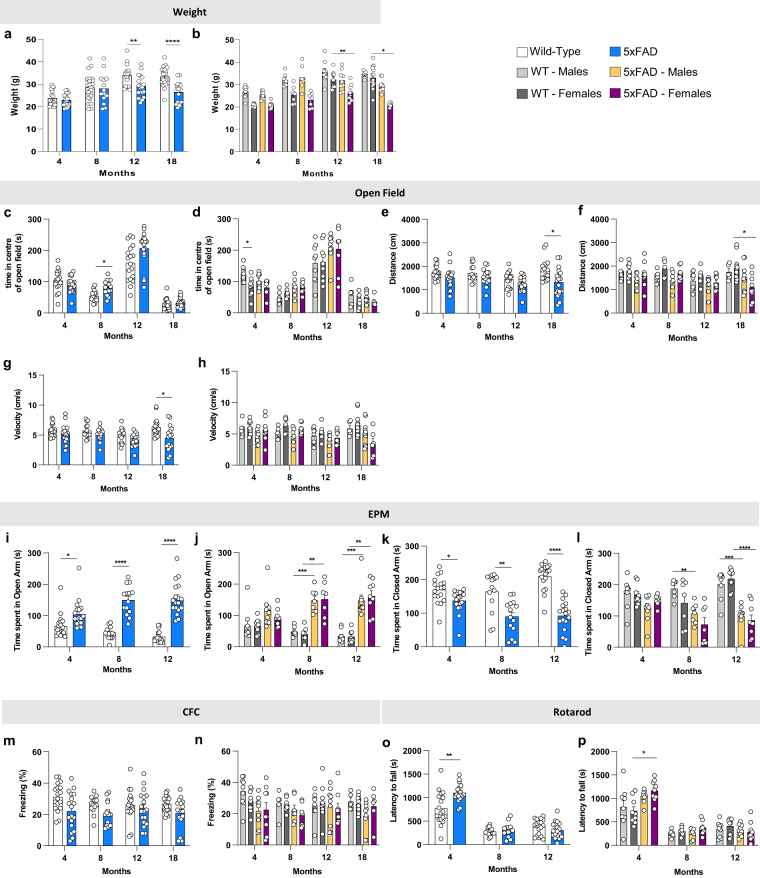Fig. 2.
Behavioral tasks reveal age-related changes in both WT and 5xFAD mice. (a,b) 5xFAD at 12- and 18- month of age show less weight gain than their littermate WT; this effect is higher on females. (c–h) The open field test reveals deficits in distance traveled and velocity at 18 months 5xFAD (e and g, respectively). (i–l) 4, 8 and 12-month old 5xFAD mice spend more time in the open arms and less time in the closed arms of the elevated plus maze. (m,n) There is no effect of either age nor genotype on the contextual fear conditioning. (o,p) On the rotarod, 4-month-old 5xFAD time of latency is higher than WT, the effect being more on females. Data are represented as mean ± SEM. *P ≤ 0.05, **P ≤ 0.01, ***P ≤ 0.001, ****P ≤ 0.0001, n = 9–10 per group.

